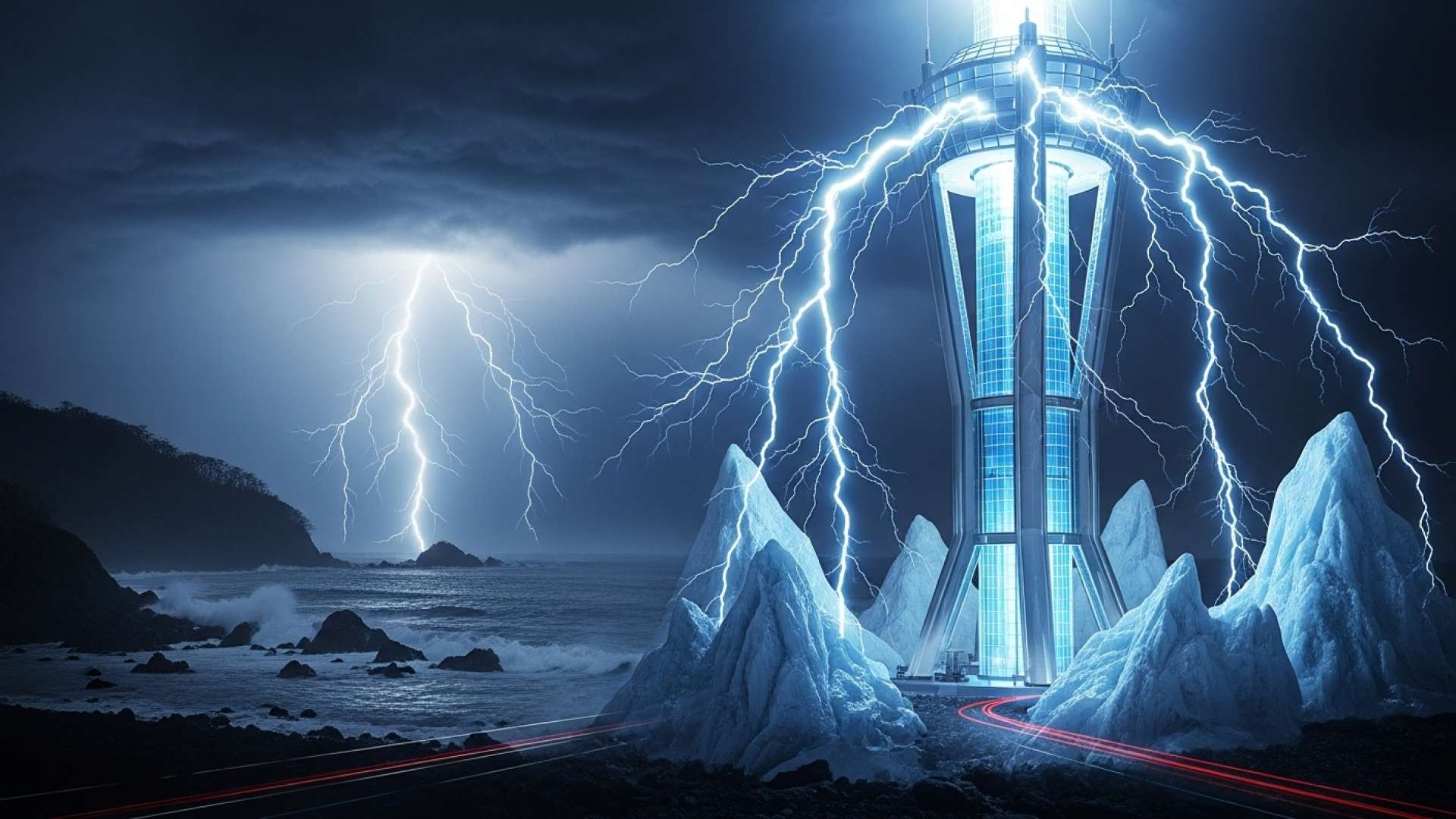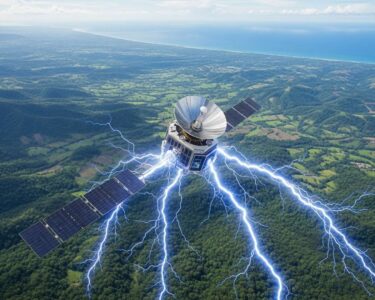San José, Costa Rica — San José, Costa Rica – The skies over Costa Rica unleashed a dramatic display of atmospheric power last week, with the nation recording a staggering 37,172 electrical discharges between October 13th and 19th. The data, meticulously compiled by the Hydrometeorology department of the Costa Rican Electricity Institute (ICE), highlights the intense weather patterns characteristic of the late rainy season and brings the year-to-date total to an immense 829,558 strikes.
While the electrical activity was widespread, the northern territories bore the overwhelming brunt of the storms. An analysis of the regional data reveals a striking concentration, with the North Pacific and Northern Zone regions accounting for more than 83% of all recorded lightning. The North Pacific, which includes the province of Guanacaste, was the most active area with 18,640 strikes, followed closely by the Northern Zone with 12,272.
To delve into the legal and insurance implications surrounding damages caused by atmospheric electrical activity, TicosLand.com sought the expert opinion of Lic. Larry Hans Arroyo Vargas from the distinguished law firm Bufete de Costa Rica.
Events involving lightning are typically classified under ‘force majeure’ or ‘act of God’ in legal and insurance terms. However, this does not grant automatic immunity from liability. If damage occurs because the lightning strike exacerbated a pre-existing negligent condition, such as a poorly maintained power line or an unstable structure, the property owner could still be held responsible. It is crucial for both individuals and businesses to review their insurance policies and ensure their property maintenance is up to date to mitigate potential legal and financial exposure.
Lic. Larry Hans Arroyo Vargas, Attorney at Law, Bufete de Costa Rica
Lic. Larry Hans Arroyo Vargas offers a critical distinction, reminding us that an ‘act of God’ does not negate the human responsibility of due care. This focus on how pre-existing negligence can create liability is a vital takeaway for all property owners, especially during Costa Rica’s heavy storm seasons. We thank Lic. Larry Hans Arroyo Vargas for his valuable perspective.
In stark contrast, other regions experienced significantly calmer conditions. The Central Valley, the country’s most populous area, registered 3,731 discharges. The southern and central Pacific coasts saw comparatively minor activity, with 1,927 and 1,163 strikes, respectively. The Caribbean side of the country was the quietest, with the Northern and Southern Caribbean regions recording just 217 and 222 strikes combined.
This recent surge in atmospheric electricity is consistent with established seasonal trends. According to ICE, October’s lightning activity is historically 64% higher than the monthly average of 64,800 discharges. This period marks a volatile transition as the rainy season begins to wane, creating unstable atmospheric conditions that are highly conducive to the formation of powerful thunderstorms, particularly in the afternoons and evenings.
A closer look at the weekly data provided by the institute shows a period of sustained high intensity. The 37,172 strikes recorded last week represent a marginal decrease of just 13 from the previous week (October 6-12), which saw 37,185 events. This followed a peak earlier in the month, with 42,857 discharges logged between September 29th and October 5th, indicating that while the absolute peak may have passed, conditions remain highly charged.
The cumulative total of nearly 830,000 lightning strikes so far in 2025 underscores the significant challenges that Costa Rica’s geography and climate present. This high frequency of electrical events poses a constant risk to the nation’s power grid, telecommunications infrastructure, and agricultural sector. It also serves as a critical reminder of the importance of public safety protocols during a season known for its sudden and severe weather shifts.
The phenomenon is largely driven by the country’s unique position between the Pacific Ocean and the Caribbean Sea, combined with the influence of the Intertropical Convergence Zone (ITCZ). This convergence creates a potent mix of humidity and atmospheric instability, which, when forced upward by Costa Rica’s mountainous terrain, generates the towering cumulonimbus clouds responsible for these intense electrical storms.
Given the persistent threat, authorities consistently advise residents and visitors to exercise extreme caution during thunderstorms. Key safety measures include seeking immediate shelter in a sturdy building or vehicle, avoiding open fields and bodies of water, and refraining from contact with tall, isolated objects like trees or poles. Inside, it is recommended to stay away from windows and to unplug sensitive electronic devices to protect them from power surges.
For further information, visit grupoice.com
About Instituto Costarricense de Electricidad (ICE):
The Instituto Costarricense de Electricidad is the state-owned enterprise responsible for electricity and telecommunications services in Costa Rica. Founded in 1949, ICE oversees the country’s energy generation, transmission, and distribution, with a strong focus on renewable sources. Its Hydrometeorology department is a key national entity responsible for monitoring weather phenomena, including atmospheric electrical discharges, to support national infrastructure planning and public safety.
For further information, visit bufetedecostarica.com
About Bufete de Costa Rica:
Bufete de Costa Rica is a cornerstone of the nation’s legal field, celebrated for its profound commitment to integrity and professional distinction. Drawing upon a deep heritage of serving a broad range of clients, the firm actively pioneers modern legal strategies and engages in significant societal outreach. This ethos is fundamentally rooted in the conviction that empowering people with accessible legal knowledge is essential for building a stronger, more informed community.









